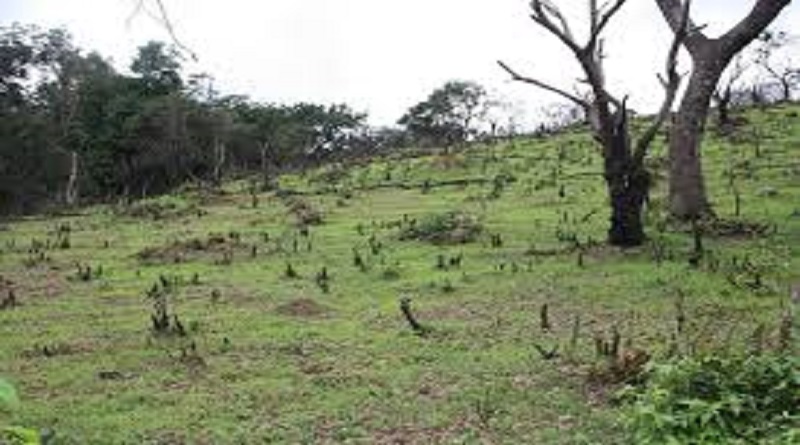Why post-2020 Global Biodiversity Framework need to focus on agricultural landscapes- Researchers
Researchers are urging the delegates of the 196 parties to the Convention on Biological Diversity to ensure that the post-2020 global biodiversity framework is a successful tool for building biodiverse, inclusive, resilient and safe food systems for all.
Writing in Environmental Research Letters, a team of researchers from some of the world’s most respected research and development organizations — World Agroforestry (ICRAF), International Union for Conservation of Nature (IUCN), Centro Agronomico Tropical de Investigacion y Ensenanza, Switzerland’s Federal Office for Agriculture, Center for International Forestry Research (CIFOR) and the Indian School of Business — argue that COVID-19 has exposed the vulnerability of our economies to shocks, has laid bare deep inequalities in our societies that threaten to derail the Sustainable Development Goals and that a key to addressing these vulnerabilities is ensuring that the world’s agricultural systems operate within a framework of enhancing biodiversity.
‘Governments around the world are looking for recovery options that deliver new jobs and businesses,’ says Anja Gassner, lead author of the study and coordinator of the Trees on Farms for Biodiversity project. ‘Few sectors link job creation so closely to sustainable green production as the food sector. It is the largest source of employment in many countries in the global South. At the same time, cities depend upon imported food that is produced in far-away countries and shipped around the world. The trillions of dollars to be invested in recovery from COVID-19 offers an unprecedented opportunity for a clean, green and just transition to a more biodiversity-friendly agricultural and food system.’
Key among the political opportunities to shift the post-pandemic world towards sustainability and resilience of biodiversity-responsive food systems are the ongoing deliberations on the Post-2020 Global Biodiversity Framework. The Framework will be the precedent for national governments to bridge economic action with the pressing need for a green, resilient recovery.
The Convention on Biological Diversity and its Strategic Plan for Biodiversity 2011–2020 have concentrated global efforts to ensure the protection of natural ecosystems and species reflected in quantifiable targets, as well as to halt further expansion of the threats from agriculture and other productive sectors into natural ecosystems.
However, the Convention does not explicitly recognize the importance of mixed agricultural landscapes for their contribution to conservation. As well, the discussion among members of the Convention has only been that, ‘sustainably managed agriculture is a gateway to achieving biodiversity conservation’, wording that doesn’t capture the full suite of actions in agricultural landscapes to achieve protection of species and provision of key ecosystem services
‘The Strategic Plan for Biodiversity 2011–2020 has not explicitly recognized the importance of mixed, diverse agricultural landscapes for their contribution to the conservation of wild biodiversity,’ says Philip Dobie, second author and senior fellow at ICRAF. ‘The Convention has an opportunity under the Post-2020 Global Biodiversity Framework process to bring its influence to bear on international policy that favours investments in local production and marketing to replace imported foods. This will contribute to both COVID-19 recovery through the creation of rural jobs and income and empowering governments and consumers to support diverse, mixed agricultural systems that conserve and enhance biodiversity as well as reduce greenhouse gas emissions.’
‘The current Post-2020 Global Biodiversity Framework discussions need to mainstream the contributions of agriculture as habitat for species and a source of critical ecosystem services across targets, monitoring elements and indicators in a more systematic manner,’ says Adriana Vidal, senior forest policy officer at IUCN. ‘When talking about conservation and restoration of ecosystems and species, parties should consider that the implementation of targets will occur in natural and managed ecosystems, such as agricultural landscapes. It is key to expand the view that agricultural landscapes’ only contribution is for food systems and re-affirm the importance of these landscapes to conservation and restoration goals.’
Agricultural land takes up between 30% and 40% of the Earth’s land surface and, hence, has a disproportionate effect on biodiversity, climate change and human wellbeing. The EAT-Lancet 2019 report, Food in the Anthropocene, is a leading policy statement on the state of today’s food systems and the urgent need for change. The report’s authors concluded that, ‘Unhealthy and unsustainably produced food poses a global risk to people and the planet’ and that a ‘Transformation to healthy diets from sustainable food systems is necessary to achieve the UN Sustainable Development Goals and the Paris Agreement, and scientific targets for healthy diets and sustainable food production are needed to guide a Great Food Transformation’. One of its main recommendations was to re-orient agricultural priorities from a focus on quantity to quality of food that delivers healthy diets and enhances biodiversity.
The Convention on Biological Diversity represents most of the world’s governments. Bringing agriculture and food production to the fore in the Post-2020 Framework will ensure that the trillions of dollars to be invested in recovery from COVID-19 offers will result in a clean, green and just transition to a more biodiversity-friendly agricultural and food system.




